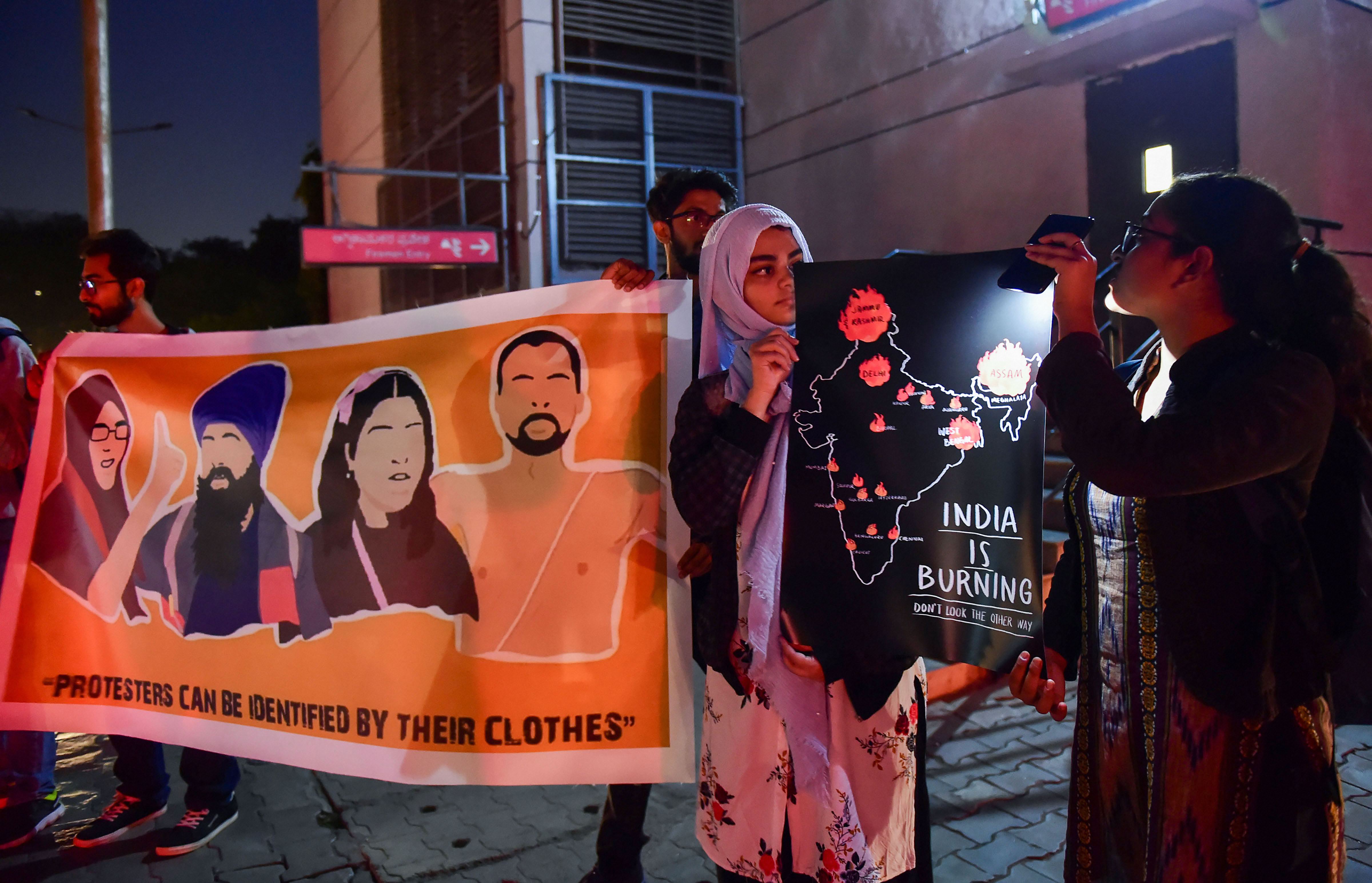
CAA-NRC: The 'ploy' to divide masses is actually uniting India
While the ruling dispensation and its digital army are trying to defame the dissents on the streets by giving it a communal colour, the anti-CAA-NRC protests across the country are blurring many old fault lines, at least as of now.

While the ruling dispensation and its digital army are trying to defame the dissent of the people taken out on the streets by giving it a communal colour, the anti-Citizenship (Amendment) Act and anti-National Register of Citizens protests across the country are blurring many old fault lines, at least as of now.
Among many positive stories emerging from ground zero, perhaps the most significant was the participation of a Naga delegation in a protest march at Jorhat in Assam.
Nagaland, otherwise, has not witnessed any major protest against the CAA as it enjoys special protection under Article 371(A) of the Constitution.
The Ao Students’ Conference (Ao Kaketshir Mungdang), the apex Ao Naga students’ organisation, led by its president Imkongwati participated in a peaceful mass protest rally against the contentious Citizenship Act on December 18.
Barely about 25 kilometres from the Jorhat town lies the border of Assam and Nagaland in Mariani section, which has been a source of festering border disputes between the two states.
Also read: Opinion | On India’s streets, youth push back BJP’s politics of hate, fear
Ever since 1965, residents of border areas of both states clashed with each other on several occasions, resulting in numerous deaths. In June 1985, police forces of both states fought an armed battle, leaving at least 100 persons dead.
The last major clash over border disputes between the two states took place in 2014. Around 18 people died in the fight, several others were injured and many houses were torched. There had been a few incidents of border disputes last year too.
Burying the hatchet, a 28-member delegation of the students’ conference came from Nagaland’s Mokokchung district, bordering Mariani, and took part in the rally, shouting “Joy Aai Axom” (Hail mother Assam).
This popular slogan, coined during the 1979-85 anti-foreigners agitation, is weaving together various communities in Assam the way the iconic “azadi” slogan is unifying students across the rest of India.
Also read: One by one states oppose NRC and CAA; now it’s Chhattisgarh
Over 1,200 kilometres away from Jorhat, on Friday (December 20) afternoon, in the communally sensitive Razabazar area of Kolkata, talking points in a roadside tea shop was when the locality last witnessed Hindus and Muslims gathering in such large numbers, holding national flags to lodge their protest.
“Maine toh pehele yein nazara kabhi nahi dekha (I have never in the past seen such a large, united protest),” said middle-aged Md Ainul Ansari, who runs a stationery shop at Canal West Road, near Khalpul.
In fact, when did India last hear its streets reverberating with inclusive slogans like “Hindu, Muslim, Sikh, Isai, aapas mein hai bhai bhai,” and “Ekta ka raaj chalega, Hindu-Muslim saath chalega”?
To suppress this united angst of a large section of the people, the Hindu victimhood card is being played.
Leading the charge, Prime Minister Narendra Modi in an election rally at Dumka in Jharkhand claimed that those creating violence could be identified from their clothing itself.
Also read: Citizenship Act may find it tough to clear ‘basic structure’ doctrine
Taking a cue from his leader, West Bengal BJP chief Dilip Ghosh went a step further and said that it was the “lungi-clad infiltrators” who had been unleashing violence in the state.
Karnataka minister CT Ravi even went on to warn people that a “Godhra-like situation” might arise if the majority lost patience.
To perpetuate the storyline of majority victimisation, digital crusaders of Hindutva stormed social media platforms, selectively sharing — mostly doctored or fake — images and videos of people from minority communities indulging in violence.
It is again the common, faceless people, who are debunking this falsehood.
Alert residents in West Bengal’s violence-hit Murshidabad district recently caught a BJP worker and his five accomplices redhanded while they were throwing stones at a train donning skull cap and lungi. They were even recording a fake Tik Tok video of their camouflaged act with an obvious intention. The local BJP leader caught in the act has been identified as 22-year-old Abhishek Sarkar.
Whether this group was operating autonomously or was a part of a greater command chain is something the police need to dig out.
However, there is no mistaking that the divide, which is being propagated, is actually uniting India.


